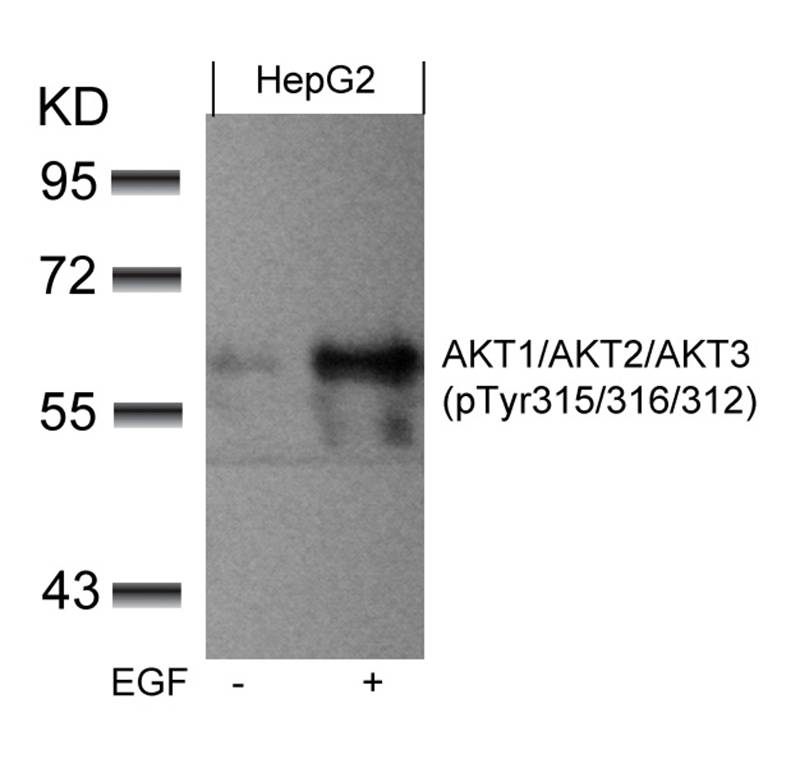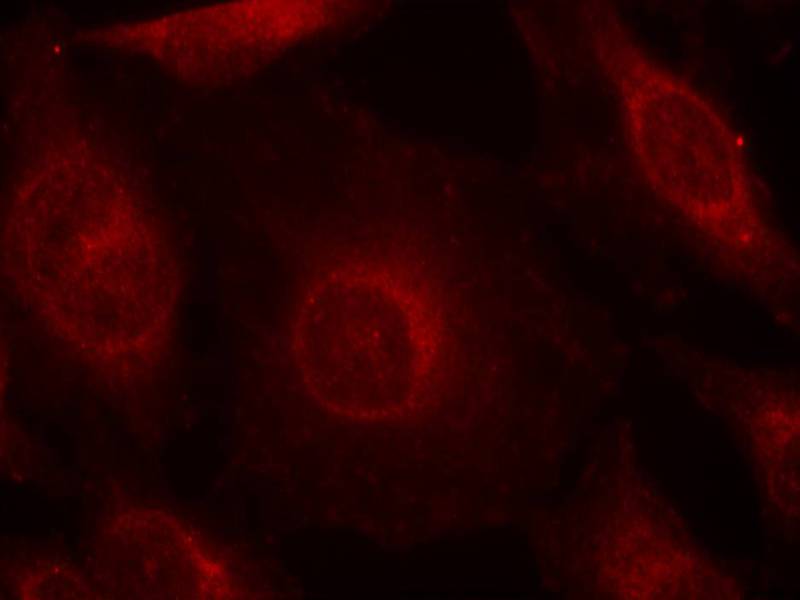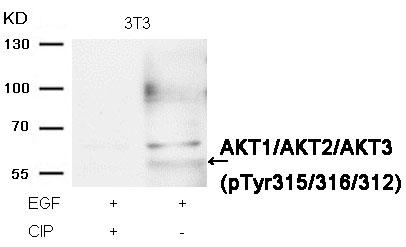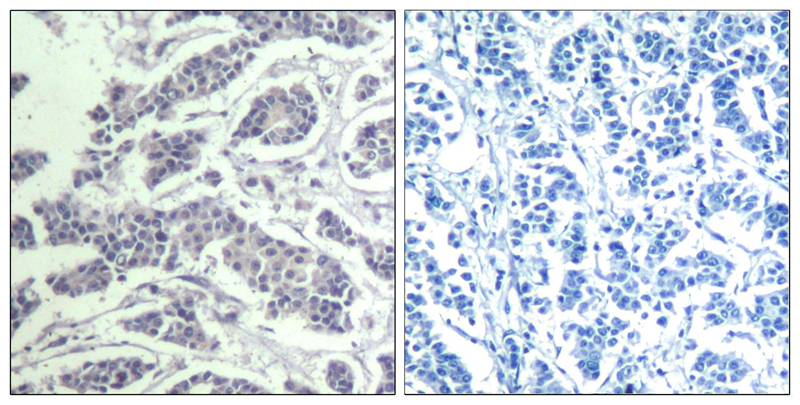



| WB | 咨询技术 | Human,Mouse,Rat |
| IF | 咨询技术 | Human,Mouse,Rat |
| IHC | 1/50-1/100 | Human,Mouse,Rat |
| ICC | 1/100-1/200 | Human,Mouse,Rat |
| FCM | 咨询技术 | Human,Mouse,Rat |
| Elisa | 咨询技术 | Human,Mouse,Rat |
| Aliases | RAC-PK-alpha; Protein kinase B; |
| Entrez GeneID | 207; |
| WB Predicted band size | 60kDa |
| Host/Isotype | Rabbit IgG |
| Antibody Type | Primary antibody |
| Storage | Store at 4°C short term. Aliquot and store at -20°C long term. Avoid freeze/thaw cycles. |
| Species Reactivity | Human,Mouse,Rat |
| Immunogen | Peptide sequence around phosphorylation site of tyrosine 315/316/312 (P-E-Y(p)-L-A) derived from Human AKT1/AKT2/AKT3. |
| Formulation | Purified antibody in PBS with 0.05% sodium azide. |
+ +
以下是关于 AKT1/AKT2/AKT3 (phospho-Tyr315/316/312) 抗体的相关参考文献,简要概括如下:
1. **"Role of tyrosine phosphorylation in the regulation of Akt activation"**
- **作者**: Chan T.O. 等
- **摘要**: 该研究揭示 AKT1 在 Tyr315 位点的磷酸化通过增强其与 PIP3 的结合促进细胞膜定位,从而激活下游信号。研究使用特异性抗体验证了该磷酸化事件在生长因子刺激下的动态变化。
2. **"AKT3 drives melanoma progression through phosphorylation of Tyr312"**
- **作者**: Mao M. 等
- **摘要**: 文章发现 AKT3 在黑色素瘤中特异性高表达,其 Tyr312 磷酸化与肿瘤侵袭性相关。作者利用磷酸化特异性抗体证实了该位点对 AKT3 激酶活性的调控作用。
3. **"Phosphorylation of AKT2 at Tyr316 regulates glucose uptake in adipocytes"**
- **作者**: Huang X. 等
- **摘要**: 研究通过抗 phospho-Tyr316 抗体发现,胰岛素通过 Tyr316 磷酸化激活 AKT2.进而促进 GLUT4 转运和葡萄糖摄取,揭示了代谢疾病治疗的潜在靶点。
4. **"Cross-talk between EGFR and AKT tyrosine phosphorylation signaling"**
- **作者**: Cheng J. 等
- **摘要**: 该文献报道 EGFR 激活后通过 Src 激酶诱导 AKT1 Tyr315 磷酸化,特异性抗体检测显示此修饰增强 AKT 抗凋亡功能,与癌症耐药性相关。
以上研究均利用位点特异性磷酸化抗体探究了不同 AKT 亚型的酪氨酸磷酸化机制及功能,涵盖肿瘤、代谢等领域。
The AKT family of serine/threonine kinases (AKT1. AKT2. AKT3) plays a central role in the PI3K/AKT/mTOR signaling pathway, regulating cell survival, proliferation, and metabolism. Activation of AKT requires phosphorylation at two critical sites: a threonine residue (T308 in AKT1) in the catalytic domain and a serine residue (S473 in AKT1) in the hydrophobic motif. While these canonical phosphorylation events are well-characterized, tyrosine phosphorylation at specific residues (Tyr315 in AKT1. Tyr316 in AKT2. Tyr312 in AKT3) has emerged as an alternative regulatory mechanism. These conserved tyrosine residues, located in the kinase domain’s activation loop, are phosphorylated in response to growth factor stimulation or oxidative stress, potentially modulating AKT’s catalytic activity, substrate specificity, or subcellular localization.
Antibodies targeting these phosphorylated tyrosine residues (anti-AKT1/AKT2/AKT3 [phospho-Tyr315/316/312]) are valuable tools for studying non-canonical AKT activation in physiological and pathological contexts. They enable detection of this post-translational modification in techniques like Western blotting, immunofluorescence, or immunohistochemistry. Research using these antibodies has implicated tyrosine-phosphorylated AKT in cancer progression, insulin resistance, and neurodegenerative diseases. However, their application requires careful validation due to potential cross-reactivity between AKT isoforms or with unrelated phosphorylated proteins. Understanding this alternative activation route may reveal novel therapeutic targets, particularly in diseases with aberrant AKT signaling.
×